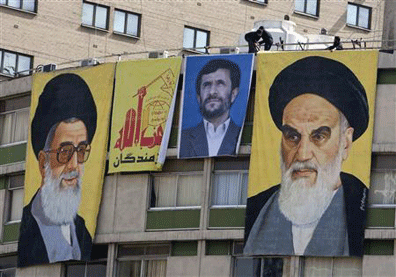
by Abbas Barzegar, The Guardian, June 18, 2009
Since the Iranian government has barred foreign journalists from recording the massive rallies in Tehran in the last two days, news outlets in the world have instead been forced to rely almost exclusively on video feeds from mobile phones, YouTube, and Twitter.
The images have splashed across the screen with the intensity of a horror film. Most of these feeds are sent without confirmation of where the events took place, who is responsible for recording them or even when they occurred. Nonetheless, their gratuitous display by some of the largest and most respected news broadcasters has left the impression that Iran is either under nationwide martial law or experiencing a bloodbath under complete darkness.
But, had the authorities here allowed open coverage of the rallies in the last 48 hours, they would have done themselves a favour. Since the announcement of seven deaths two days ago every gathering here has increasingly taken a more peaceful tone. Likewise the initial overreaction by the security apparatus seems to have been corrected.
Perhaps an eyewitness recap of the last few days of street violence can help give readers a non-Twitter view of Tehran.
The intensity of the presidential campaign days before the election was immeasurable and it was clear that the country was headed for a showdown bigger than any ballot box. The first signs of violence occurred on Saturday within hours of the announcement of Mahmoud Ahmadinejad’s re-election as president as the opposition candidate Mir Hossein Mousavi demanded an annulment of the elections. The next day I headed to the controversial president’s victory speech to assess the street politics firsthand.
In an ocean of Ahmadinejad supporters waiving Iranians flags and traditional Shia banners, a group of 25-30 Mousavi supporters bravely marched down the sidewalk. Their chants were not as light-spirited as they had been a few nights prior, “Death to the dictator”. They waved pictures of their beleaguered candidate. Within seconds they scattered in all directions, jumping over street barricades, hiding in alleys and melting into the larger crowds. The Basiji vigilante forces had arrived. There were only three of them. Out of uniform but wielding military-grade batons, they quieted the crowd within the blink of an eye.
Later in the afternoon I went to the Mousavi stronghold, Vali Asr street in northern Tehran, where the power relations were an exact inverse. The streets were jammed with honking cars, many draped with green banners. As I walked up the street typically known for its towering trees and chic boutiques, a group of young men started a small bonfire in the gutter. As they added cardboard to the fire, a lone motorcycle with three Basijis jumped into the scene. Within seconds they were crushed from all sides with flying rocks and bricks. As two of the Ahmadinejad loyalists fell to the ground a mob descended upon them. The third batted back with a four-foot metal pipe.
On Monday, in defiance of the government’s refusal to issue a permit for a Mousavi rally, hundreds of thousands (some say millions) of his supporters flooded Engelab Street in central Tehran. The force of the numbers held the police at bay. Later that evening we began to hear announcements of deaths and by morning state officials confirmed the loss of seven.
Tuesday saw the announcement of rival rallies organised to take place on Vali Asr square within hours of one another. That is precisely when the authorities blocked foreign journalists and the world came to rely on podcasts for information on the ground.
I watched in amazement as the rival groups marched alongside one another. They tried to out-slogan one another and though they were within feet of each other there was no hostility. Mousavi supporters melted from sight and the pro-Ahmadinejad gathering took the rather cumbersome and routine tone of an Iranian state rally.
Also on a downbeat tone, instead of confronting the Ahmadinejad crowd, Mousavi supporters changed plans and organised miles up the street at Vanak Square. They headed up the street towards the state television and radio station. They formed a silent human chain and marched along with their fingers raised in a peace sign, doubling as a V for victory.
All the while they held signs that read “Silence=Protest”. Well aware of how quickly fires could be stoked, organisers “hushed” rowdy elements whenever they emerged. They arrived at the TV station, now in the tens of thousands, a powerful show of force aimed directly at the state. The crowd, until now deadly silent, released a flood of cheers and claps. A few police smiled as they were complimented on the green colour of their uniforms.
On Wednesday rumours pointed to another mass Mousavi rally. Like the day before, the crowds were smaller (still in the tens of thousands) and increasingly disciplined. They refrained again from slogans or provocative actions. The government again held back. Mousavi had called for a day of mourning on Thursday and the supreme leader again called for calm.
Although newscasters have been forced into replaying choppy video clips of chaos borrowed from YouTube and Twitter, the streets here are relaxing. I returned last evening to north Vali Asr Street where I had felt the anxiety of police clubs first-hand just days before. I stood outside listening to the familiar Tehran sound of honking cars, trying to distinguish those still declaring victory for Mousavi from those simply annoyed with traffic. I finished my ice cream and hailed a cab.
Twenty-eight years old and born and raised in southern Tehran, my driver told me he didn’t know anyone who voted for Mousavi and didn’t really understand what was going on.